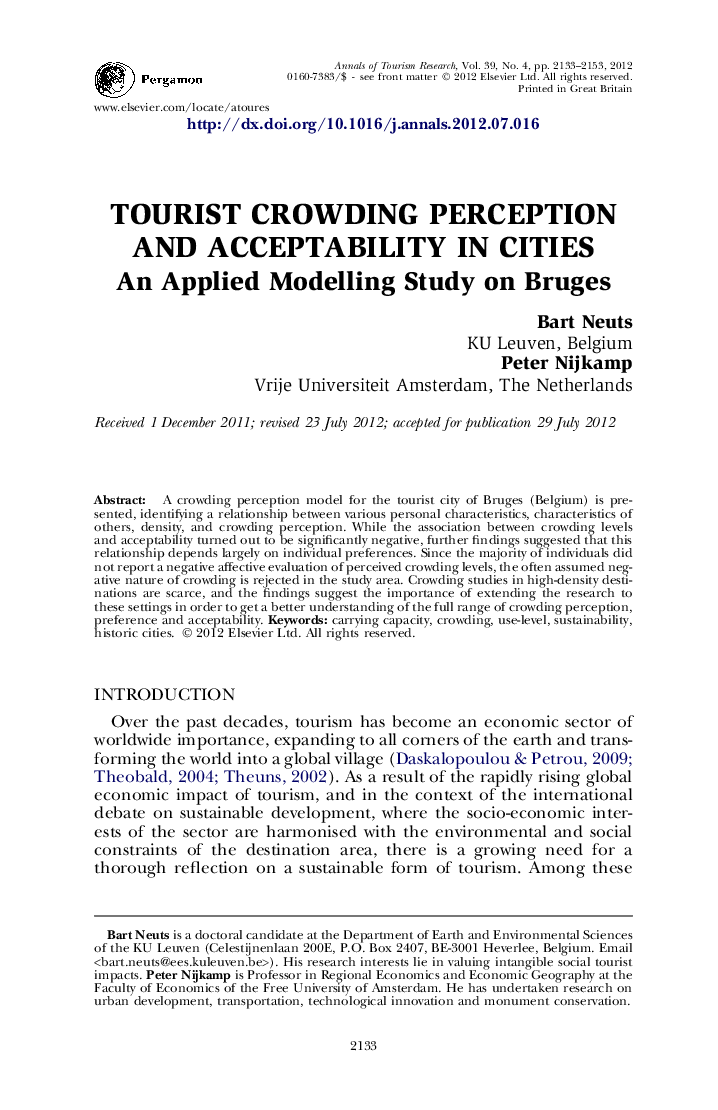| Article ID | Journal | Published Year | Pages | File Type |
|---|---|---|---|---|
| 1007389 | Annals of Tourism Research | 2012 | 21 Pages |
A crowding perception model for the tourist city of Bruges (Belgium) is presented, identifying a relationship between various personal characteristics, characteristics of others, density, and crowding perception. While the association between crowding levels and acceptability turned out to be significantly negative, further findings suggested that this relationship depends largely on individual preferences. Since the majority of individuals did not report a negative affective evaluation of perceived crowding levels, the often assumed negative nature of crowding is rejected in the study area. Crowding studies in high-density destinations are scarce, and the findings suggest the importance of extending the research to these settings in order to get a better understanding of the full range of crowding perception, preference and acceptability.
► We apply a perceived crowding model to an urban destination. ► We examine the influence of objective and subjective characteristics. ► Crowding is not only a function of use numbers. ► Increased crowding levels lower acceptability only for low preference groups.
